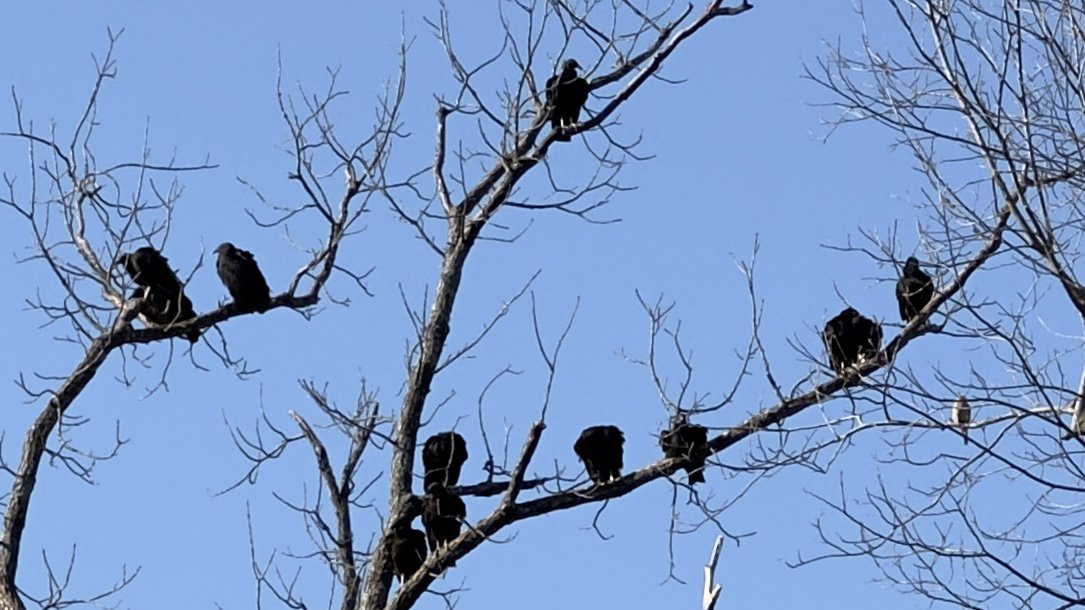Over the weekend we went to a birthday party for one of our granddaughters. There is a creek through the woods near their home. While standing on the deck, I notices a large number of black vultures .. and I mean LARGE number. I tried to count them but there was just too many. I shot these two photos as we were heading home. Just a small sample.
~ Rick
Rick’s latest technology muse:
Check out our vlog, which includes more pictures and video on YouTube at tales.photos. Remember to subscribe!
Prints are available for many of the photos on this site on canvas, metal or glass. Contact Rick for more information.
©2019 ©2020 ©2021 ©2022 ©2023 Rick Cartwright



